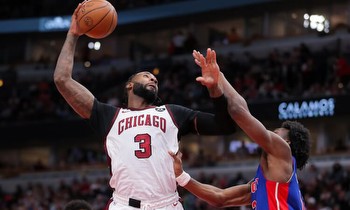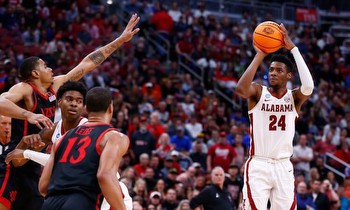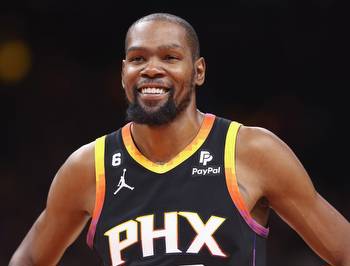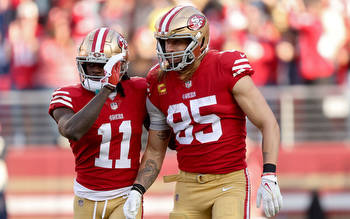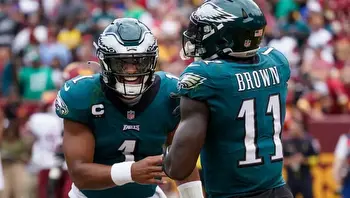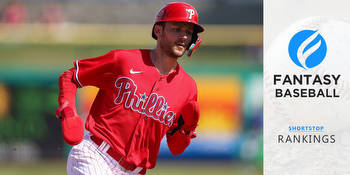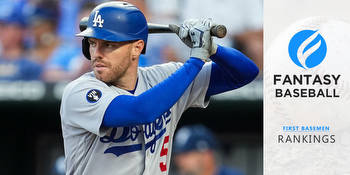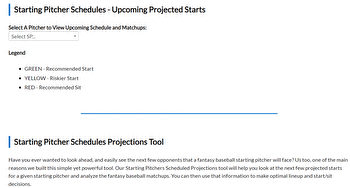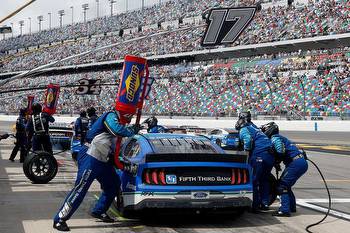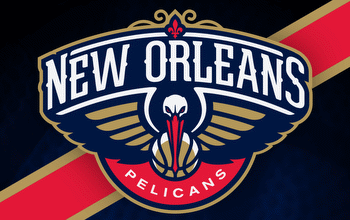Playing postseason fantasy baseball? Here's how to draft, have fun and come out on top
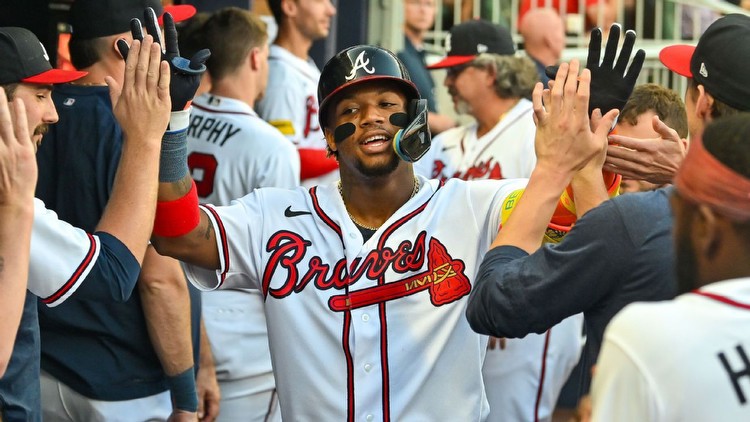
The MLB regular season wraps up Sunday, but that doesn't necessarily mean playing fantasy baseball has to end too.
Postseason fantasy baseball leagues are becoming increasingly popular, not only for those looking for regular-season retribution but also for anyone looking to keep the competitive juices flowing.
How these leagues work
What makes these leagues fun and compelling is the balance a fantasy manager must strike between picking the most talented players vs. selecting players on teams that are likely to advance the furthest and play the most games.
The best players aren't very useful if their team bows out early and the player only plays 2-3 games. Now, an overlooked player whose team advances deep into October and plays a bunch of games? Well ... now we're talking!
Land a star or two on a team that advances to the World Series and you're going to be very tough to beat.
One way to objectively account for the number of games everyone might play is by using betting odds to win the World Series. While this doesn't measure the length of each series, which can be important since the better teams may finish off their opponent sooner, it's still wise to gauge how many series you expect each team to play and not overthink the number of games per round.
Rosters and scoring setup
As far as the scoring goes, it varies from league to league and comes down to personal preference. That said, most postseason fantasy leagues are points based. The advantage of points scoring is the ease of computing and tracking.
For batters: Most leagues assign points to hits (sometimes broken into singles, doubles and triples), home runs, RBIs, runs and walks.
For pitchers: Points are added for innings, strikeouts, wins and holds, while subtracted for earned runs and hits allowed, and -- in some leagues -- losses.
Other considerations: Usually, the corner and middle infielder spots are left out and the number of outfielders and pitchers is reduced from the standard five and seven spots, respectively, in standard regular season ESPN leagues.
Keep in mind, the fewer the roster spots, the better the chance of completing the draft in a timely manner.
That said, you still want enough spots to require managers to think about how they want to assemble their rosters since some positions will be collectively stronger than others.
Types of leagues
The beauty of postseason fantasy baseball is there are plenty of formats which can be customized to those participating. You can emulate the regular season and use a reserve roster and allow free agent pickups, or you can play draft and hold, where there are no further transactions.
Snake drafting is the most common format. However, some leagues allow you to construct your roster within the league specifications without a draft, so there will be overlap among the competitors. Assuming the roster size is sufficient, the chances of two identical teams are remote.
Draft and hold is very popular as it requires drafting ... then doing nothing. Well, the latter isn't true for the volunteer tasked with scoring. Someone with spreadsheet skills is usually required to keep track of the standings, but assuming a simple scoring system is utilized, playing the role of the commissioner service isn't too taxing.
The advantage of draft and hold is after the sometimes daunting task of finishing the draft before the playoffs begin, you do nothing but sit back and enjoy the playoffs, rooting harder for those on your fantasy squad. After the grind of a six-month regular season, having a little skin in the game, but not needing to spend time every day managing your roster is a great compromise.
The disadvantage is the earlier your players are eliminated from the playoffs, the less of a chance you have to win a league. In draft and hold, there are generally no reserves, though there is nothing to prevent a league from incorporating a reserve roster.
Drafting strategies
Roster stacking
The more players you have active, the better the chances of winning. Therefore, your chances of winning increases with the more players you have on World Series teams.
To do that, though, you need to stack your roster with multiple players from the same team. You can aim for the representatives from both leagues or focus on one and build mini-stacks from the other leagues.
For example, the Dodgers and Braves will be the biggest favorites, so targeting a few players from both teams while fully stacking an American League team is a viable approach.
Another idea is fading the Braves and Dodgers, and instead banking on the Phillies to do what they did last season and stack their roster. Then, choose a pair of American League squads for the mini-stacks.
If your plan is selecting players from specific teams, there is a good chance you'll be able to achieve the objective by drafting lesser players on the targeted teams in lieu of better options still on the board.
Along those lines, you can go against the grain early by choosing to fill a perceived weaker position with someone from the rosters in your sights, especially if the player is one of the better players on the MLB club.
The extreme is selling out for one team in both leagues, and hoping you correctly identified the World Series representatives from each side.
The pitfall is if both fail to make it, you are out of the running, and if one makes it, your chances of winning the league may be lessened.
The benefit is if you get it right, the title is likely yours.
Consider opportunity cost
Filling a roster spot has an influence on the rest of your draft. There is an opportunity cost associated with each selection. For example, let's say your rankings exhibit a stronger set of first baseman than second baseman. If you draft a first baseman, it means you can't take another one.
It may have been better to draft the highest ranked second baseman on your list because the combined potential of this second baseman and the first baseman you take later is better than the potential of the better first baseman and the second baseman you select later.
Admittedly, this is a myopic view since it's the potential of the overall roster that matters and not just two players, but this notion of opportunity cost helps drive each pick, since every pick affects all ensuing picks.
Opportunity cost also has implications in roster stacks. There are a limited number of players available for a stack, and there is an opportunity cost associated with drafting a player from a team you're not stacking. A lower ranked player may be more useful if he plays more games than a higher ranked player. In this instance, drafting the higher ranked player may hinder your ability to assemble a stack.
Stacking in the later rounds
As an example, you might look at the Twins and note their starting pitching matches up with just about everyone, since most teams are dealing with injuries to the better arms in their rotation. You don't need to start stacking Twins until the later rounds since their players will not be on the radar of the other drafters.
The same notion can be applied to the Blue Jays, Phillies and Brewers. Their pitching can carry them through five- and seven-game series. Since you don't need to expend early picks to assemble a stack, they can be used to pile up points on the best players, so you'll have the edge if someone else also stacks the team you select.
Drafting tips for success
Overview of playing field
Once the postseason field is established, set up rankings by position, with enough choices to fill your league requirements.
For example, if there are 10 teams in your league, and everyone needs one each from catcher, first base, second base, third base and shortstop, rank the top 10 at each position. Do the same for the required outfield and pitchers. If the rosters have a corner, middle or utility, add ample players to account for those spots.
With that accomplished, study the inventory to identify the weaker and stronger positions along with how they sync with the teams you expect to advance the furthest in the tournament.
Some of this depends on the scoring system and the points assigned to wins, saves and perhaps holds, but it is integral to decide where to rank closers relative to starting pitchers.
Most teams will use three starters in a wild card and division series, and four in the league championship and World Series, but a closer is available for virtually every game. At worst, the closer should be the third-highest ranked arm on each team, if not first or second.
The tricky park is in leagues using holds. The fourth starter may only pitch twice, so in some cases, the primary setup man may be better than the fourth starter.
Size and roster requirements of the league
A deeper league has more teams and larger rosters than a shallow league. The deeper the league, the harder it is to stack. One reason is players you need to stack are more likely to be selected by another team manager in larger leagues.
Another is with more roster spots to cover, even if you can choose four or five players from the same team, there are a bunch of other spots that need to be filled. The rule of thumb is the deeper the league, the more the early focus is on the best available players.
As hinted earlier, it is possible to combine taking the best player with stacking in deeper formats. You can take Ronald Acuna Jr., then fill in with lesser Braves later. You can take Mookie Betts or Freddie Freeman, then assemble a Rays or Phillies stack later.
The fewer the teams, the easier it is to stack. If your league has just six teams, the chances of drafting Acuna, then having Ozzie Albies and Max Fried available with the 12th and 13th picks are greater.
Speaking of having just six, or eight teams, go for it! This is supposed to be fun. If you can only round up five of your friends or workmates to join, do it.
Pay attention to other drafters
This is another commonality with regular leagues, but the need to know what others are doing is amplified in the playoff format. If you plan on stacking a team, but observe one, if not more competitors targeting the same lineup, pivot to another team.
If you notice the better players from a specific team are being ignored, swerve and back that team.
Try to determine if some team managers are looking to fill the perceived scarcer spots first. This does not mean it's necessary to follow suit.
Sometimes the best approach is akin to drafting a catcher in seasonal leagues and waiting until the end to fill in the spot with the best available on your cheat sheet. However, when assembling a team requiring specific assets to make it optimal, you need to know what others are trying to accomplish.
Have a good time
Perhaps this should have been the lead. It's been a long season, mentally taxing. There's nothing wrong with dedicating a playoff league to your favorite team, or even players for which you enjoy rooting.
Yeah, sure, take it seriously, but first and foremost, HAVE FUN!

